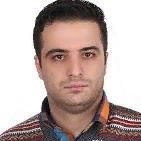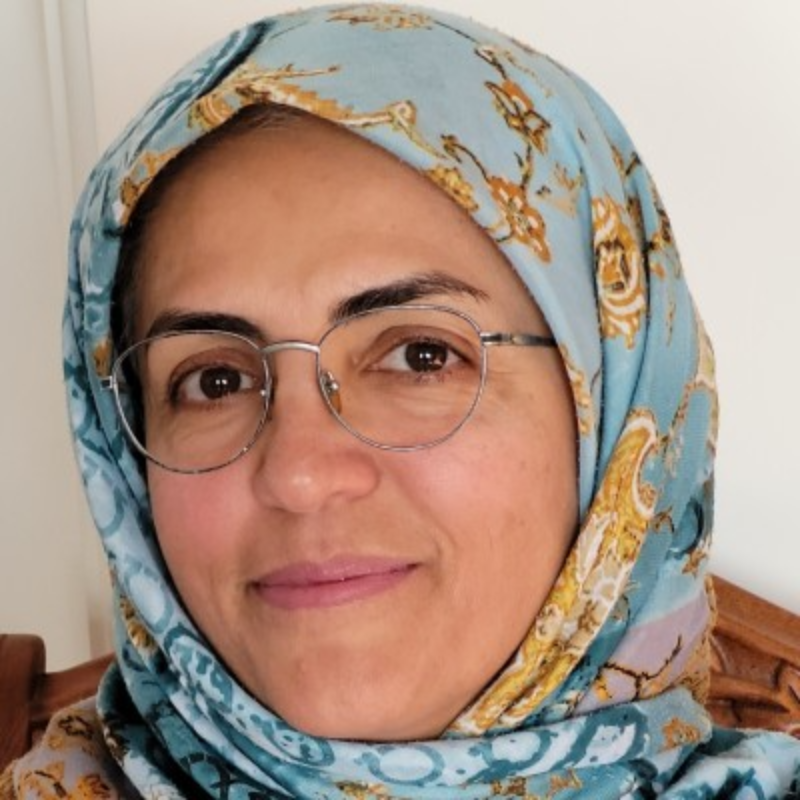International Journal of Image, Graphics and Signal Processing (IJIGSP)
IJIGSP Vol. 11, No. 11, 8 Nov. 2019
Cover page and Table of Contents: PDF (size: 910KB)
Fast and Accurate Classification F and NF EEG by Using SODP and EWT
Full Text (PDF, 910KB), PP.29-35
Views: 0 Downloads: 0
Author(s)
Index Terms
Focal EEG signal, empirical wavelet transform (EWT), second order difference plot (SODP), central tendency measure (CTM), support vector machine (SVM), K nearest neighbor (KNN)
Abstract
Removing the brain part, as the epilepsy source attack, is a surgery solution for those patients who have drug resistant epilepsy. So, the epilepsy localization area is an essential step before brain surgery. The Electroencephalogram (EEG) signals of these areas are different and called as focal (F) whereas the EEG signals of other normal areas are known as non-focal (NF). Visual inspection of multi-channels for F EEG detection is time-consuming along with human error. In this paper, an automatic and adaptive method is proposed based on second order difference plot (SODP) of EEG rhythms in empirical wavelet transform (EWT) domain as an adaptive signal decomposition. SODP provides the data variability rate or gives a 2D projection for rhythms. The feature vector is obtained using the central tendency measure (CTM). Finally, significant features, chosen by Kruskal–Wallis statistical test, are fed to K nearest neighbor (KNN) and support vector machine (SVM) classifiers. The achieved results of the proposed method in terms of three objective criteria are compared with state-of-the-art papers demonstrating an outstanding algorithm here in.
Cite This Paper
Hesam Akbari, Sedigheh Ghofrani, " Fast and Accurate Classification F and NF EEG by Using SODP and EWT", International Journal of Image, Graphics and Signal Processing(IJIGSP), Vol.11, No.11, pp. 29-35, 2019. DOI: 10.5815/ijigsp.2019.11.04
Reference
[1]Zhu, G., Li, Y., Paul Wen, P., et al.: ‘Epileptogenic focus detection in intracranial EEG based on delay permutation entropy’. Conf. Proc., American Institute of Physics, 2013, vol. 1559, pp. 31–36.
[2]Sharma, R., Pachori, R.B., Acharya, U.R.: ‘Application of entropy measures on intrinsic mode functions for automated identification of focal EEG signals’, Entropy, 2015, 17, (2), pp. 669–691.
[3]Ghofrani, S., Akbari, H.: ‘Comparing nonlinear features extracted in EEMD for discriminating focal and non-focal EEG signals’, the 10th International Conference on Signal Processing System (ICSPS), Singapore, November 2018.
[4]Das, A.B., Bhuiyan, M.I.H.: ‘Discrimination and classification of focal and non-focal EEG signals using entropy-based features in the EMD-DWT domain’, Biomed. Signal Proc. Control, 2016, 29, pp. 11–21.
[5]Singh, P., Pachori, R.B.: ‘Classification of focal and non focal EEG signals using features derived from fourier-based rhythms’. J. Mech. Med. Biol. ,2017, 17,(4), pp. 1740002.
[6]Sharma, R., Pachori, R.B., Acharya, U.R.: ‘An integrated index for the identification of focal electroencephalogram signals using discrete wavelet transform and entropy measures’, Entropy, 2015, 17, pp. 5218–5240.
[7]Dalal, M., Tanveer, M., Pachori, R.B.,: ‘Automated identification system for focalEEG signals using fractal dimension of FAWT based sub-bands signals’, International Conference on Machine Intelligence and Signal Processing, India, Indore, December 22–24, Indore, India, 2017.
[8]Rahman, M.M., Bhuiyan, M.I.H., Das, A.B.,: ‘Classification of focal and non-focal EEG signals in VMD-DWT domain using ensemble stacking’, Biomed. Signal Proc. Control, 2019, 50, pp. 72–82.
[9]A. Bhattacharyya, A., , Sharma, M., Pachori, R.B., Sircar, P., Acharya, U. R., : ‘A novel approach for automated detection of focal EEG signals using empirical wavelet transform’, Neural Computing and Applications, 2018, 29, (8), pp. 47–57.
[10]Kantz, H., Schreiber, T., ‘Nonlinear time series analysis’, Cambridge University Press, 2004, Cambridge.
[11]Roulston, M.S., : ‘Estimating the errors on measured entropy and mutual information’, Phys D, 1999, 125, (3), pp. 285–294.
[12]Fasil, O., Rajesh, R., Thasleema, T.,: ‘Influence of differential features in focal and non-focal EEG signal classification’. Humanitarian Technology Conference, 2017, pp. 646–649.
[13]Pachori, R.B., Patidar, S.: ‘Epileptic seizure classification in EEG signals using second-order difference plot of intrinsic mode functions’, Comput. Methods Programs Biomed., 2014, 113.2, pp. 494–502 .
[14]Haar, A., ‘Zur theorie der orthogonalen funktionensys- teme’, Mathematische Annalen, 1910, 69, (1), pp.331–371.
[15]Rloul, O., Vetterli, M.: ‘Wavelets and signal processing’, IEEE Signal Process. Mag., 1991, 18, (4), pp. 14–38.
[16]Gao, R., Yan, R.: ‘Wavelets: theory and applications for manufacturing’ (Springer, London, 2011).
[17]Gilles, J.: ‘Empirical wavelet transform’, IEEE Trans. Signal Process., 2013, 61, pp. 3999–4010.
[18]Daubechies I.: ’Ten lectures on wavelets’, SIAM, 61, 1992.
[19]Andrzejak, R.G., Schindler, K., Rummel, C.: ‘Nonrandomness, nonlinear dependence, and nonstationarity of electroencephalographic recordings from epilepsy patients’, Phys. Rev. E, 2012, 86, (4), p. 046206.
[20]Oung, Q.W., Muthusamy, H., Basah, S.N., Lee, H., Vijean, V.,: ‘Empirical Wavelet Transform Based Features for Classification of Parkinson’s Disease Severity’. Journal of Medical Systems,2018, 42:29.
[21]Maheshwari, S., Pachori, R.B., Acharya, U.R.,: ‘Automated Diagnosis of Glaucoma Using Empirical Wavelet Transform and Correntropy Features Extracted From Fundus Images’, IEEE Journal of Biomedical and Health Informatics, 2017, 21, (3), pp.803-813.
[22]Gilles, J., Tran, G., Osher, S.,: ‘2D empirical transforms. Wavelets ridgelets and curvelets revisited’, Society for Industrial and Applied Mathematics Journal on Imaging Sciences, 2014, 7,(1), pp.157-186.
[23]Gilles, J., Heal, K.,: ‘A parameter less scale-space approach to find meaningful modes in histograms–Application to image and spectrum segmentation’, International Journal of Wavelets, Multiresolution and Information Processing, 2014,12, (6), pp.1450044.
[24]Hossain, A.B.M., Rahman, M., Ahsan, M.,: “Left and Right Hand Movements EEG Signal Analysis Using Wavelet Transform and Probabilistic Neural Network”, International Journal of Electrical Computer Engineering, 2015,5,(1), pp. 92-101, 2015.
[25]Altan, G., Kutlu, Y., Yeniad, M.,:‘ECG based human identification using Second Order Difference Plots’, Computer Methods and programs in Biomedicine, 2019, 170, pp.81-93.
[26]Altan, G., Kutlu, Y., Pekmezci, A.O., Nural, S.,: ‘Deep learning with 3D-second order difference plot on respiratory sounds’, Biomed Signal Process Control, 2018, 45, pp.58–69.
[27]Cohen, M.E., Hudson, D.L., Deedwania, P.C.,: ‘Applying continuous chaotic modeling to cardiac signal analysis’. IEEE Eng Med Biol Mag, 1996, 15, 5, pp.97–102.
[28]Baratloo, A., Hosseini, M., Neigda, A., Ashal, G.E.,: ‘Part 1: Simple Definition and Calculation of Accuracy, Sensitivity and Specificity’, Emergency, 2015, 3,(2), pp.48-49.
[29]Kohavi, R.A.,: ‘study of cross-validation and bootstrap for accuracy estimation and model selection’, In Proceedings of the 14th International Joint Conference on Artificial Intelligence,1995, pp 1137–1143.

